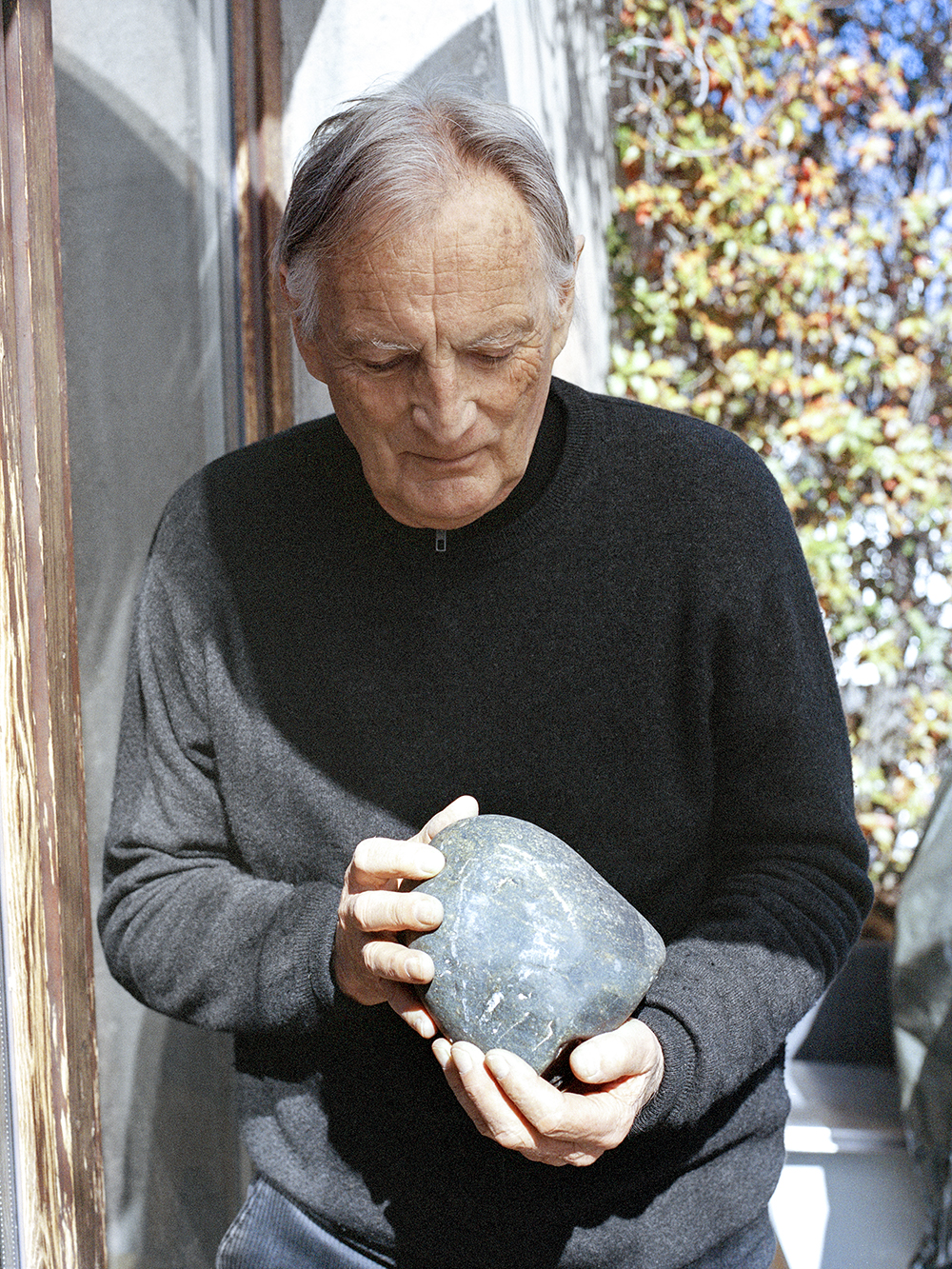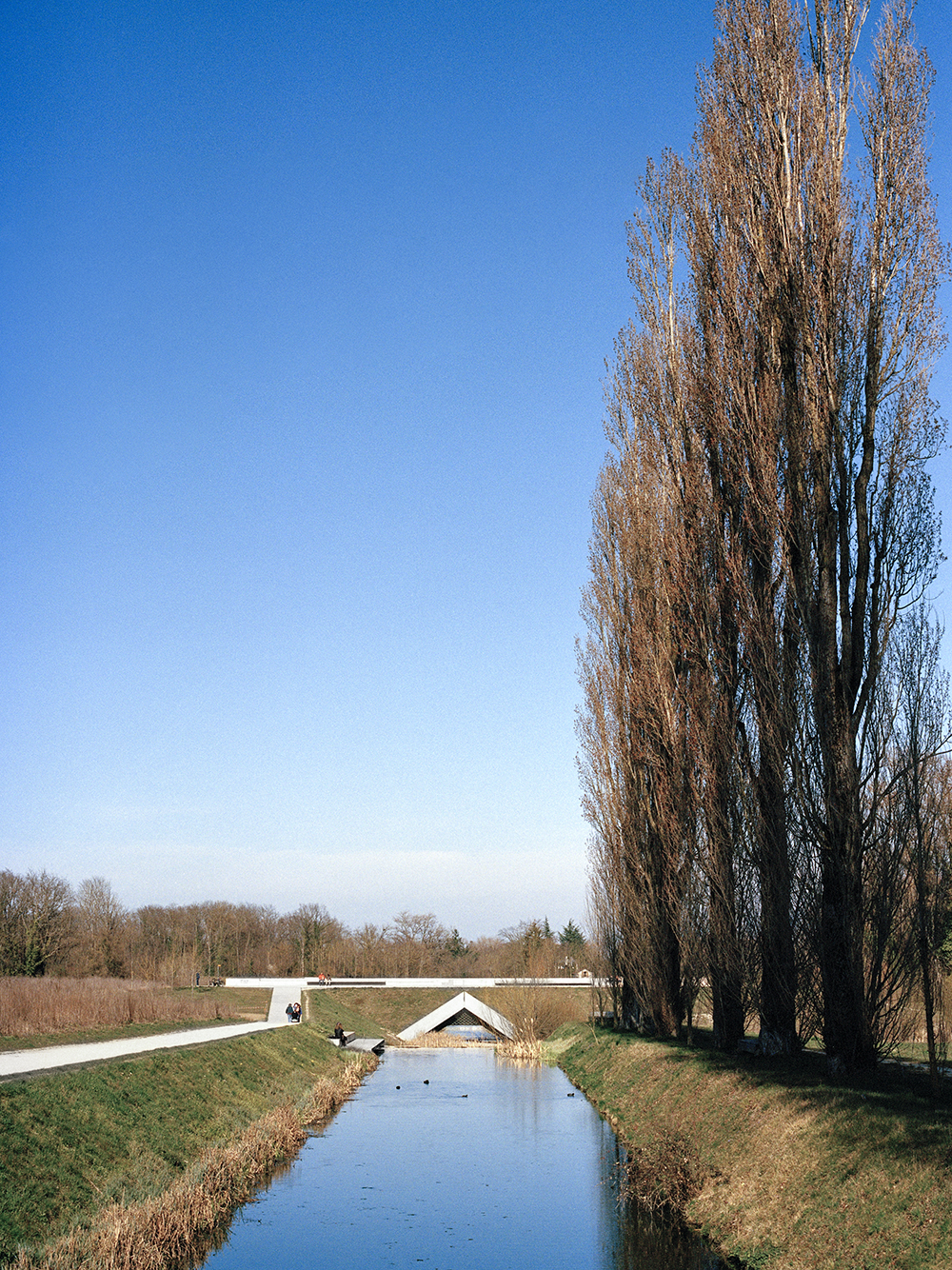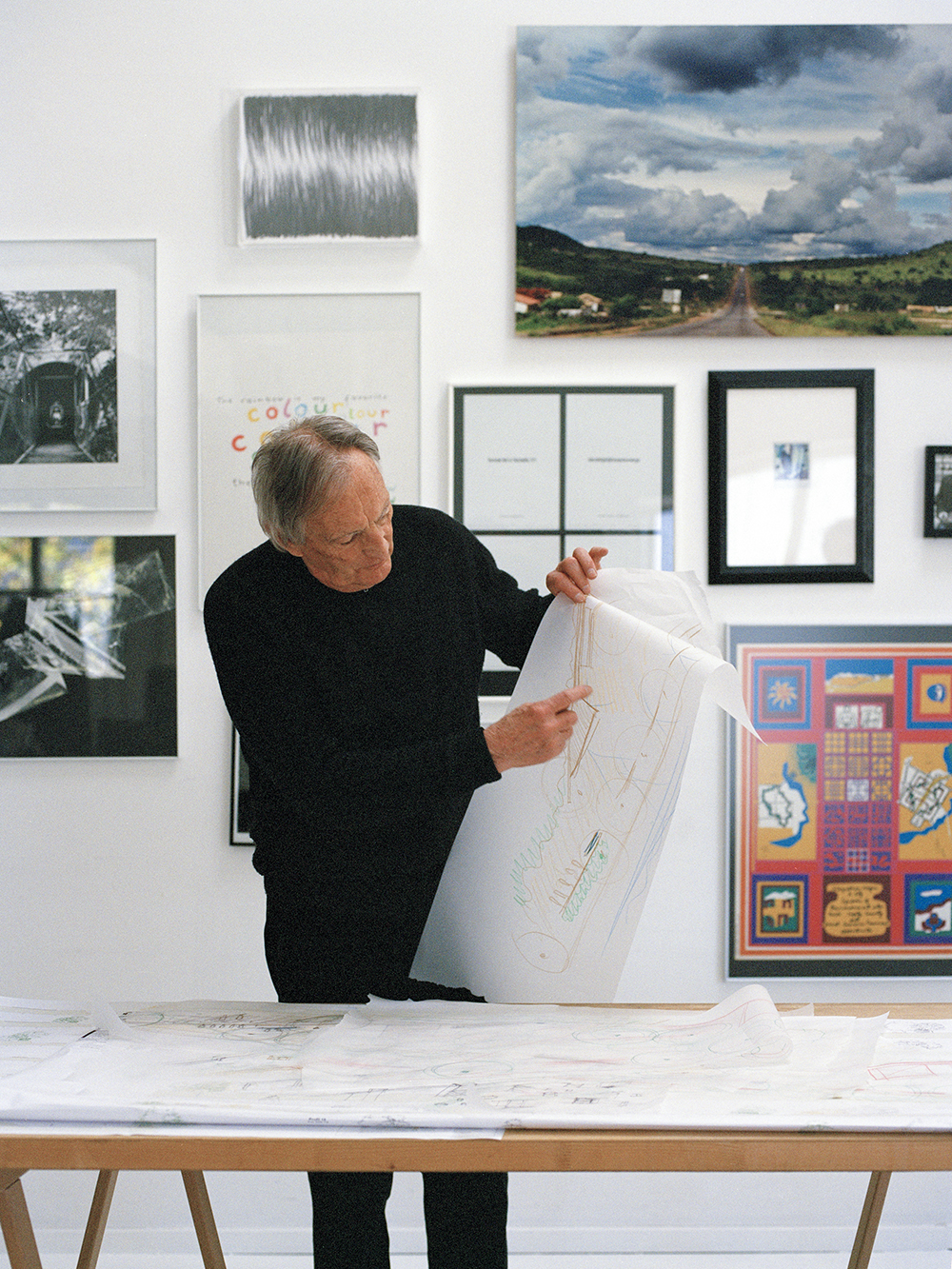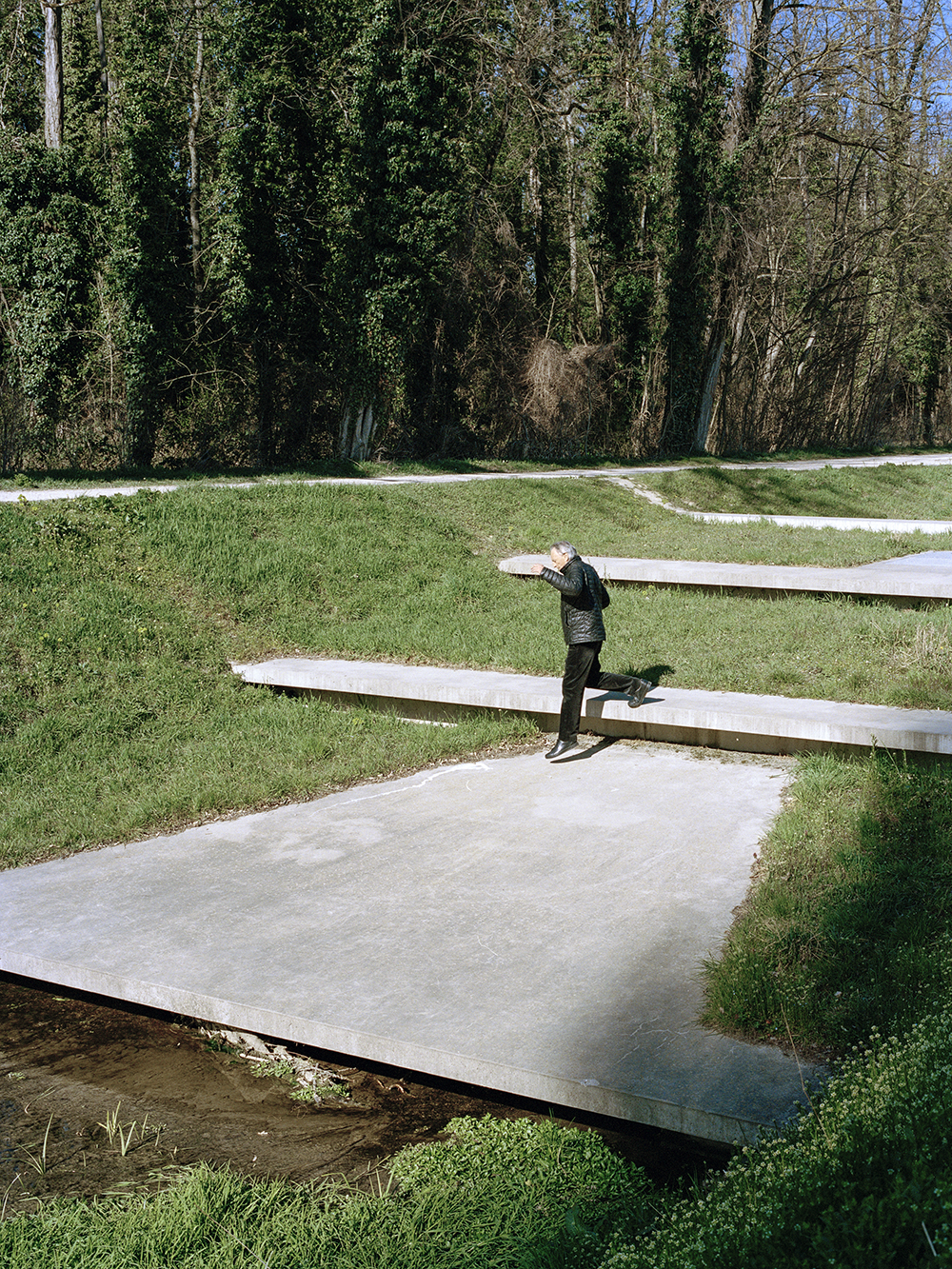‘Not to see the trees, but the wind that they make visible. The eddies of the water more than the banks. It’s a choice, a risk, a hypothesis, the possibility of an intervention glimpsed in the complexity of a site, then the adjustment of constraints that are closer and closer. It is in the confrontation with the resistance of things, of the world, that we find form.’ Georges Descombes
Georges Descombes
Jury statement
'In speaking with Georges Descombes, I regret not having been able to follow his teaching and the disciplinary effervescence that he was able to create within the Geneva school of architecture, in that Architecture and Landscape seminar, surrounded by leading lights of landscape and philosophy.' (Victoria Easton)
© BAK, Marie-Eve Hildbrand / Terrain Vague, Lausanne
Georges Descombes (born 1939 in Geneva, lives in Geneva)
Georges Descombes is an ‘architect of landscape’: a landscape that extends from Geneva to Zurich (and beyond) and that he travelled around while a student of architecture. After formative years with Pier Luigi Nervi and Marc-Joseph Saugey, he discovered London in the early 1970s. In 1975 he returned from there to Geneva, where his academic career began and he set up the CREX (Centre de Réalisation Expérimentale) at what was then the École d’Architecture de Genève. His teaching activities repeatedly drew him to the wide expanses of America: to Harvard University Graduate School of Design in Cambridge (1999) and the University of Virginia School of Architecture in Charlottesville (2000).
Alongside his academic work and architectural projects, Georges Descombes executed projects in the landscape which were invariably guided by the history of the location but without ever becoming nostalgic. Instead, they were always designed to give a sense not just of the present but also of the potential future. In his early projects, such as the Parc de Lancy in the 1980s, the Geneva section of the Swiss Path around Lake Lucerne in the early 1990s and the Bijlmer Monument in Amsterdam at the end of the 1990s, he treated the landscape concerned as a palimpsest, and was always on the lookout for traces both visible and invisible. He felt it was crucial ‘to live not in the past but with the past’.
In 2000 he began working on the Confluence district of Lyon, Antwerp’s southern docks and the Quai des Matériaux in Brussels. Employing participatory processes, he asked what it means to make a landscape in an urban environment
today. A believer in strong gestures, Georges Descombes invariably strove to arouse emotion, driven by his view of architecture as ‘par excellence an art of experience’. As Ludwig Hohl put it, in his work, Descombes was always concerned ‘to raise the temperature of existing things’.
Also in the early 2000s, Georges Descombes began to study the renaturing of the River Aire landscape in the canton of Geneva, which over the course of its execution until it was completed in 2015 became one of his most emblematic projects: like a manifesto of landscape and the ‘urbanism of revelation’, it prompted a reflection on nature in all its violence and artificiality, at once dominated and dominant, but also on its relationship to humankind, which is both responsible for, and victim of, the Anthropocene.









